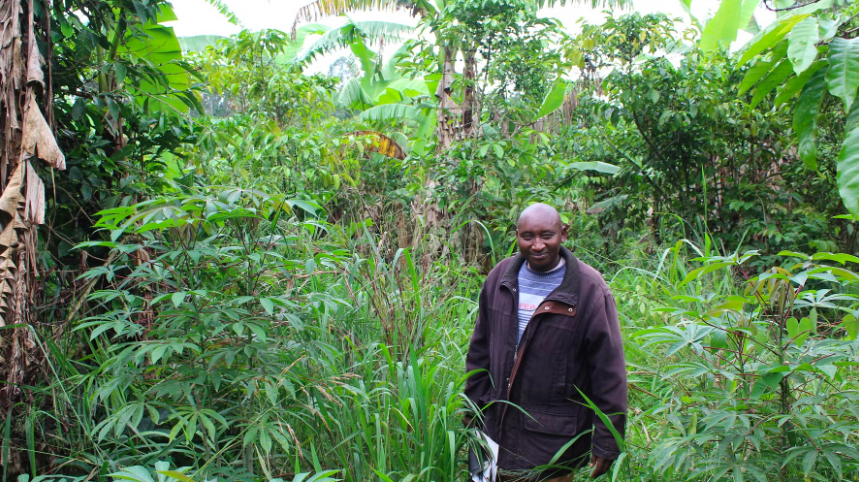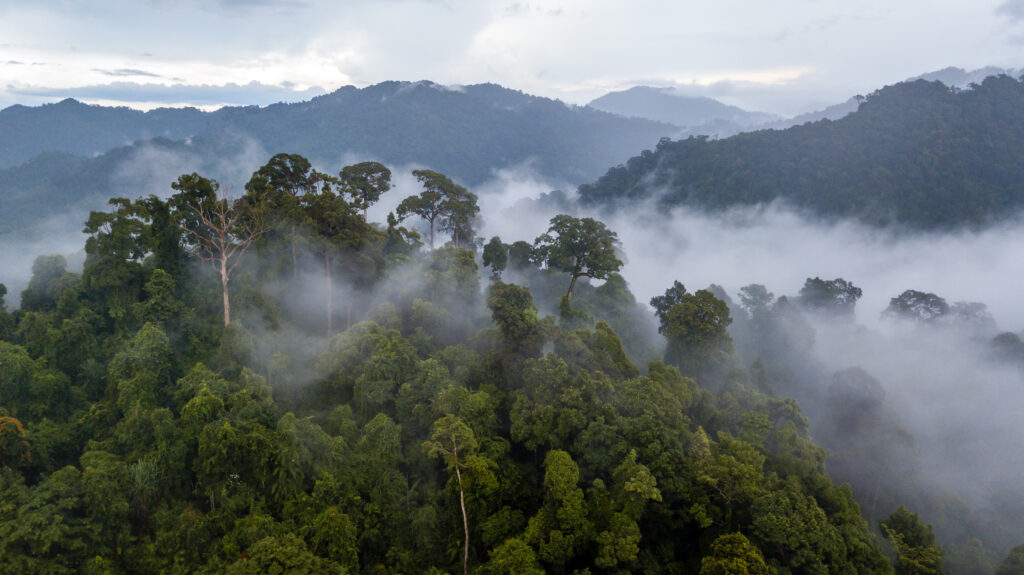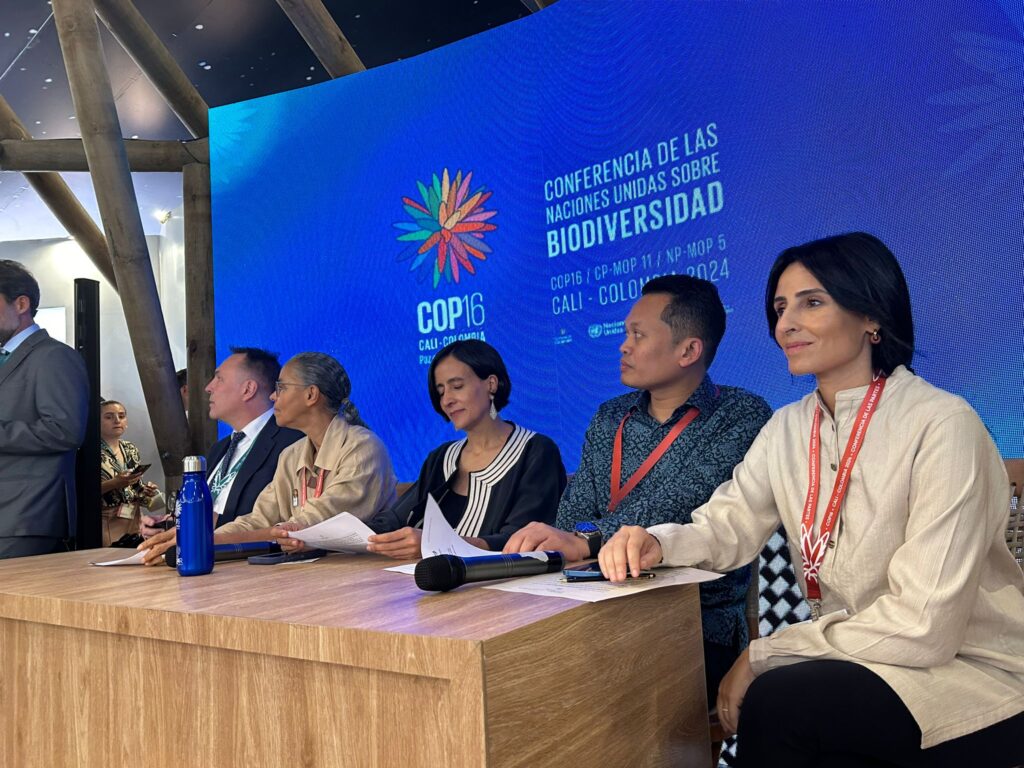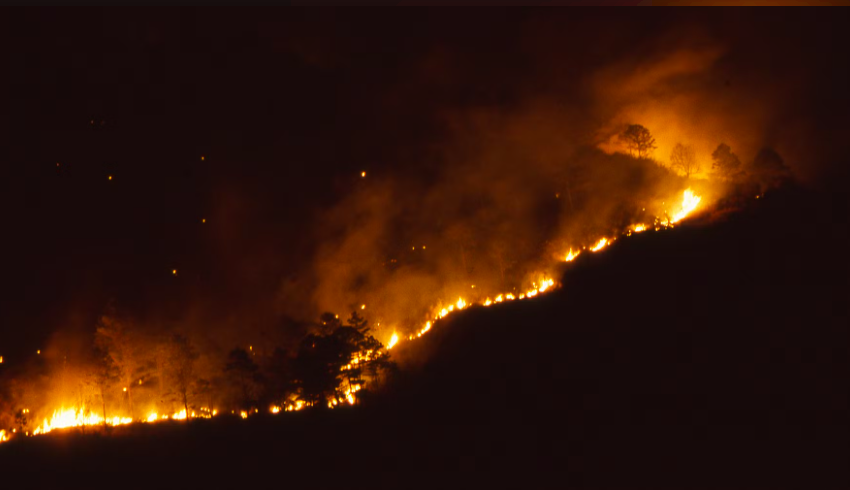Forests of the World works with agroforestry in Ethiopia, Uganda, and Bolivia
Forests of the World works with agroforestry in Ethiopia, Uganda, and Bolivia. Here, agroforestry serves as buffer zones around forests, corridors between them, and, in itself, benefits biodiversity and the climate. It is also crucial that those who practice agroforestry are properly organized and that their livelihoods are improved, so they continue this practice.
In western Uganda, Christopher Byabogambi resides. When you step onto his land, you are greeted by a symphony of bird sounds, buzzing insects, and bees. The air smells of spices, and it is humid, cool, and pleasant. It feels as though you are in a forest just beginning to sprout, sheltered from the burning sun. Trees, plants, and crops grow in width, height, and amongst each other. Some wild ibises roam around, pecking at the ground.
“They are my friends,” exclaims Christopher Byabogambi, pointing to the birds. “Before, I cut down almost all the trees on my land to grow maize. Now, I’ve learned that that’s not good. I’ve received training and learned how to practice agroforestry, and I’ve also learned to take better care of nature,” he says, referring to the agroforestry that has now been growing on his land for four years with support and training from Forests of the World and our partners, Joint Effort to Save the Environment (JESE).
“We need the trees, and we need the animals, so we must learn to live together with them, so we disturb each other as little as possible,” he continues, noting that many more wild animals have come to his land since he started agroforestry. However, he still lives too far from the proper forests to see larger animals such as monkeys and elephants.
Where he previously only grew a few types of crops, today he cultivates many. He grows coffee, vanilla, cocoa, and nuts for oil as cash crops. He also grows chili, maize, sweet potatoes, carrots, cabbage, and several plants with medicinal and insect-repellent properties for personal use. He collects rainwater in basins for periods of drought, and in other basins, he keeps fish. He has bees for pollination and honey, and he grows flowers that attract wild bees to help pollinate his other crops. He also grows fast-growing trees for firewood or building materials, as well as five types of bananas, which provide shade in the early stages of agroforestry, while native tree species that grow at different rates and heights serve as shade trees in the medium and long term. His vanilla and cocoa crops are still not ready to provide a larger yield.
“Coffee already gives me quite a bit of money. We also get help from Forests of the World to sell on the international market. This gives us a higher income than if we only sold locally.”
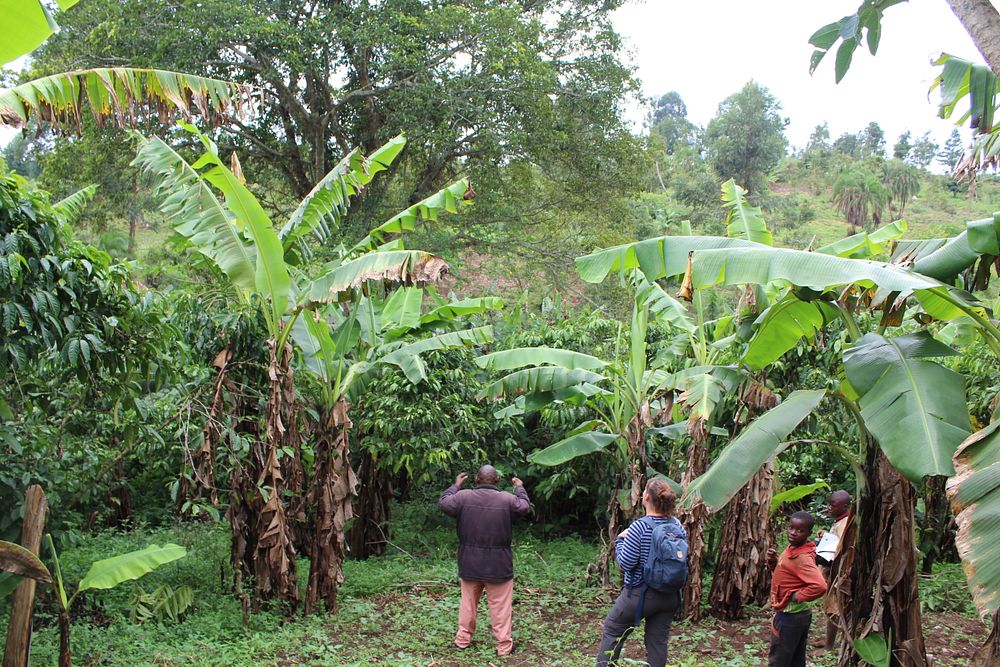
His agroforestry system is designed to stop soil erosion, retain and clean water, hold nitrogen from decaying plant matter to keep the soil fertile for coffee, vanilla, and cocoa, and protect against drought, flooding, and storms. In this way, he is better protected from the increasing climate changes that bring more extreme weather.
“I don’t use any pesticides or chemicals. I only use what God has given me from products that grow from the earth,” he proudly states.
However, Christopher does not limit himself to practicing agroforestry on his own land. He also teaches others as part of Forests of the World’s work, so the concept can spread.
Agroforestry as Buffer Zones and Corridors Between Forests
Forests of the World works in Uganda and Ethiopia, where we, in collaboration with our partners, assist farmers and cooperatives in practicing agroforestry in buffer zones around forests as well as in corridors that connect forests and their wildlife. For example, in western Uganda, where Christopher lives, the goal is to create buffer zones around forests and, in the long term, to connect Kibale National Park, Itwara Central Forest Reserve, and Matiri Central Forest Reserve with corridors where agroforestry can be incorporated into a landscape plan that increases tree cover and allows more animals to move between the forests.
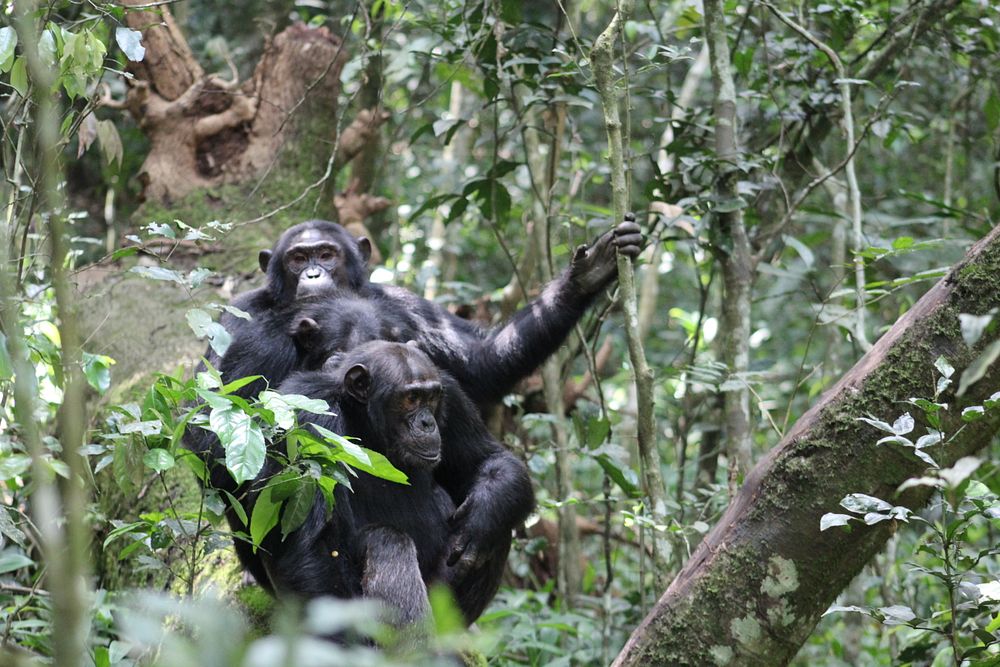
Kristian Lybæk, East Africa Coordinator for Forests of the World, explains: “Agroforestry is not actual forest, but it is one of the most sustainable forms of land use, addressing many of the challenges farmers face, including soil erosion and land depletion. Moreover, our models always focus on growing multiple crops together so the farmer is better prepared for poor harvest seasons for individual crops and climate change. Additionally, the farmer gains resources in the form of trees, making them less dependent on the resources from nearby natural forests, which has been a major cause of deforestation,” he explains.
Agroforestry, Improved Livelihoods, and Forest Conservation
It is often controversial to discuss population growth as a problem, but it cannot be ignored when talking about Uganda and Ethiopia. In 1990, Uganda had just over 17 million people. Today, there are over 45 million, and by 2040, according to the World Bank, that number will double to 90 million. In the same period, forest cover has gone from 18 percent to under 11 percent today. In 1900, 54 percent of Uganda was covered in forests. Ethiopia had 47 million people in 1990, and today, 120 million people live there, and the country’s forest cover has dropped from 19 to 15 percent.
Many of the people in these two countries are poor and dependent on the forests. For example, most Ugandans use wood or charcoal for cooking, which requires huge amounts of wood. At the same time, many people rely on healthy forests and the continuous ecosystem services they provide, such as water, food, medicinal plants, firewood, climate stabilization, protection against landslides, and many other things. Despite the long-term benefits forests can provide, they are often cleared.
“Every time there is a need for short-term jobs and money, it is the forests that lose out. That is why it is so important to create opportunities that help both the forests and improve the livelihoods of the local people,” says Kristian Lybæk.
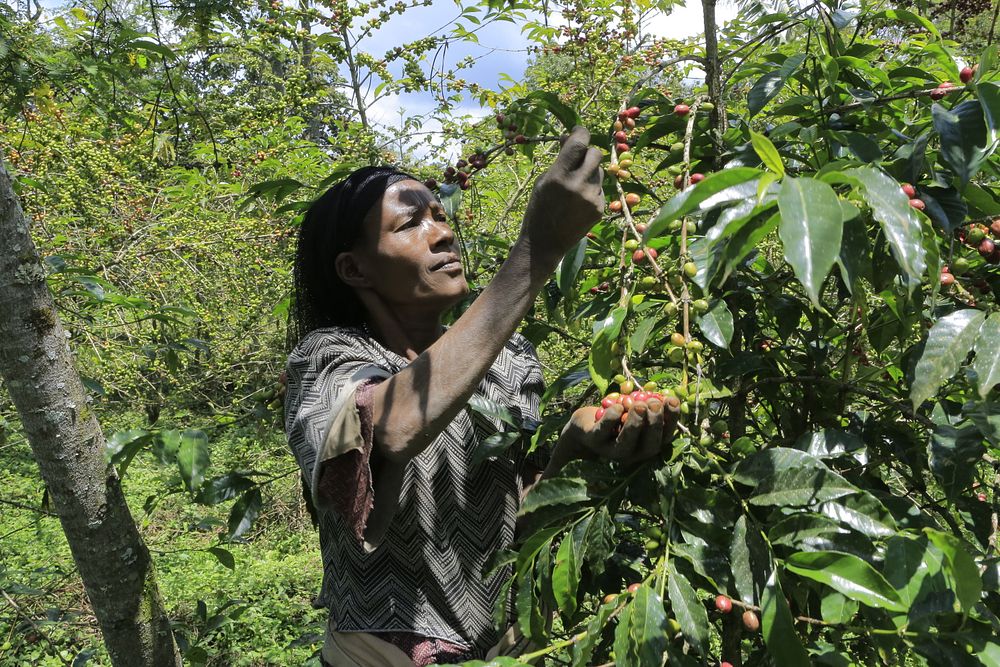
“For agroforestry to succeed in relieving pressure on the forests, the organizational work behind it is inevitable. Whereas farmers previously mainly grew food for themselves, they now need to work together in cooperatives, grow cash crops instead of just subsistence crops, and negotiate a better price with professional buyers, so many things need to succeed to prevent them from clearing their agroforestry land and returning to less sustainable farming. They must work transparently, avoid corruption, collaborate as a group rather than as individuals, and learn how to trade with people from Europe who are accustomed to a professional business environment. These things often collide with the locals’ desire to get food or money in hand here and now. Therefore, we also spend a lot of energy on making the organizational aspect work,” he continues. While this may seem like a large task, Forests of the World is fully engaged in this work, and we have already helped establish cooperatives in Uganda and Ethiopia.
“We have also begun looking at data systems to help locals comply with the upcoming EU law on deforestation, the so-called EUDR. If they have their land properly measured and can prove they haven’t cleared forests to produce their goods, they will gain advantages over others, which will lead to a better price in the EU market and an improved livelihood. In other contexts, we help the cooperatives connect with buyers, both local and international, depending on what benefits the farmers in each situation,” says Kristian Lybæk.
Improving Poor Soil
Til et møde med et af kooperativerne møder vi en anden bonde, Deus, som også dyrker skovlandbrug på sin jord.
At a meeting with one of the cooperatives, we meet another farmer, Deus, who also practices agroforestry on his land.
“I bought the farm 10 years ago, and four years ago, I started agroforestry. Today, I get a lot out of my small land. I grow vanilla, cocoa, coffee, and food for myself, I have bees for honey, and I get wood for firewood and building. The air is fresh, and I work in the shade, not in the sun. I also produce more coffee now because before, my coffee was often burned by the sun,” Deus says, adding: “When I bought the land, there was a lot of soil erosion, no trees, no nutrients in the soil, and it was completely bare. The previous owner sold it to me because the land was no longer productive. When he later saw how much I had gotten out of the land, he was very surprised.”
Asked if there are many animals on his land today, he replies without hesitation: “There are a lot! The birds are good. I’ve planted beans, but they don’t eat them.” Asked if he has ever regretted transitioning from conventional farming to agroforestry, he responds: “No, not at all. I am very happy with my land today, and I encourage other farmers to practice agroforestry as well.”4o mini
Press Contact
Jonas Schmidt Hansen
Who is Forests of the World?
We work to preserve the world’s forests, both in Denmark and the world’s tropical forests.Our focus areas include sustainability, Indigenous Peoples and local engagement.
